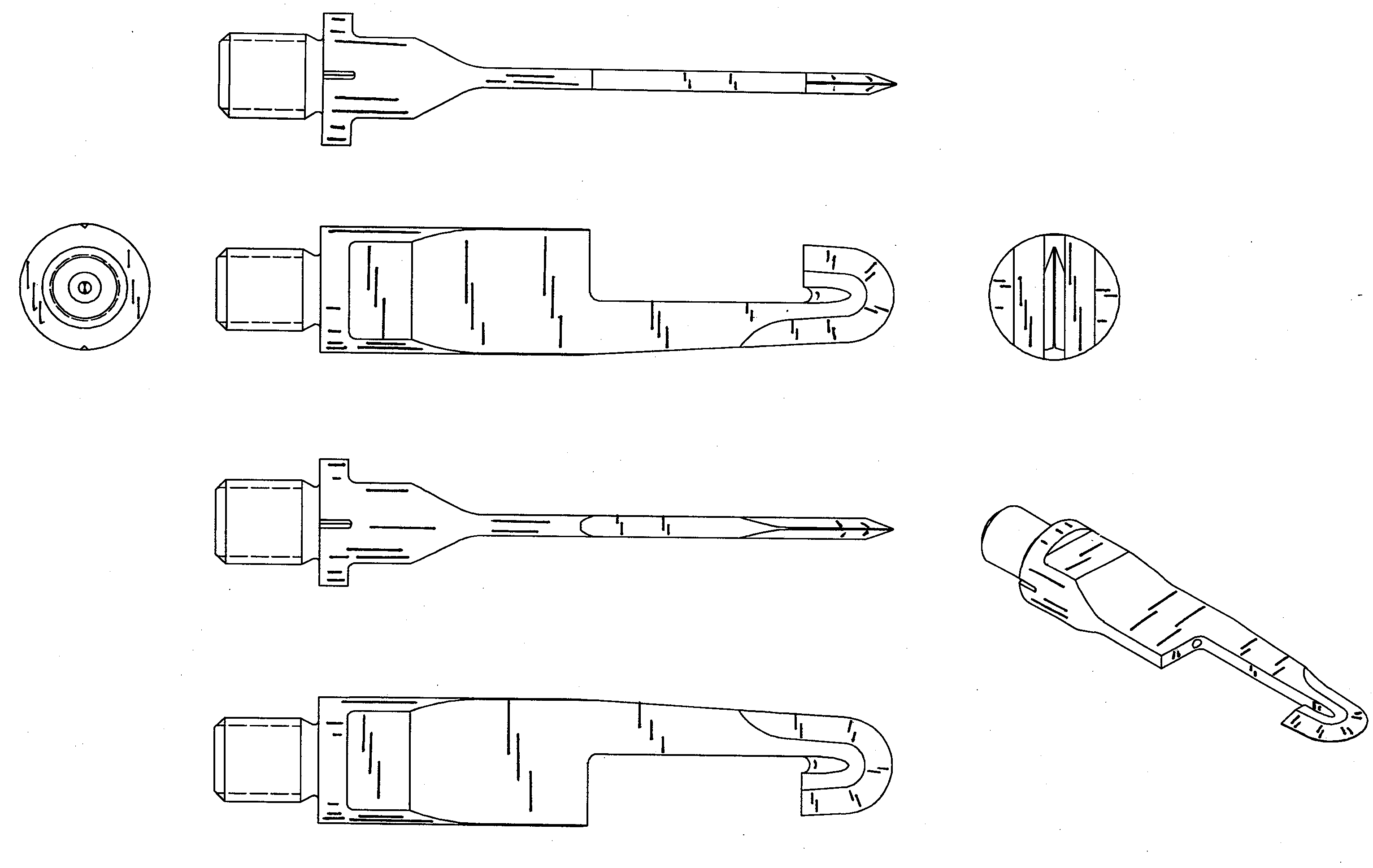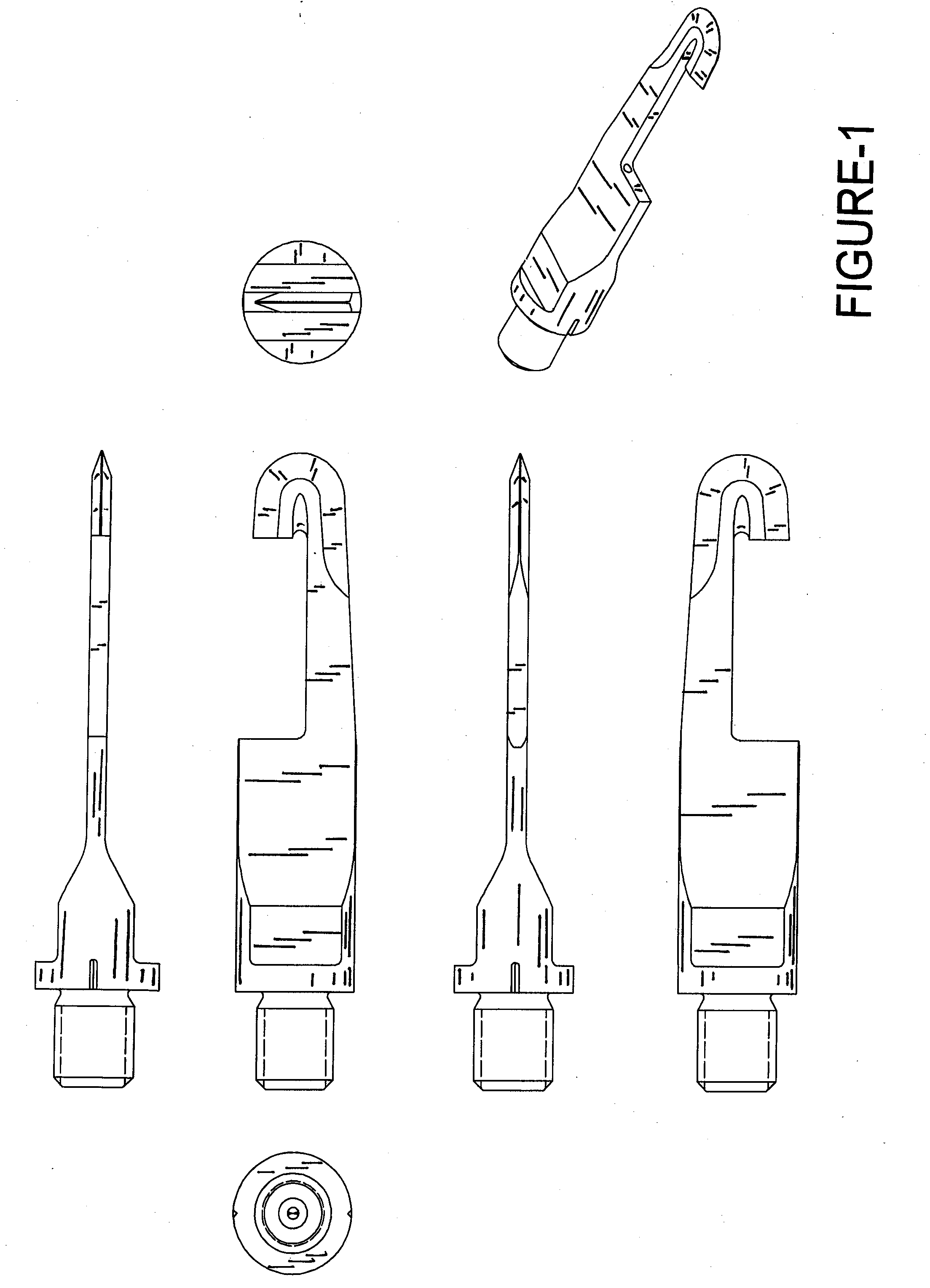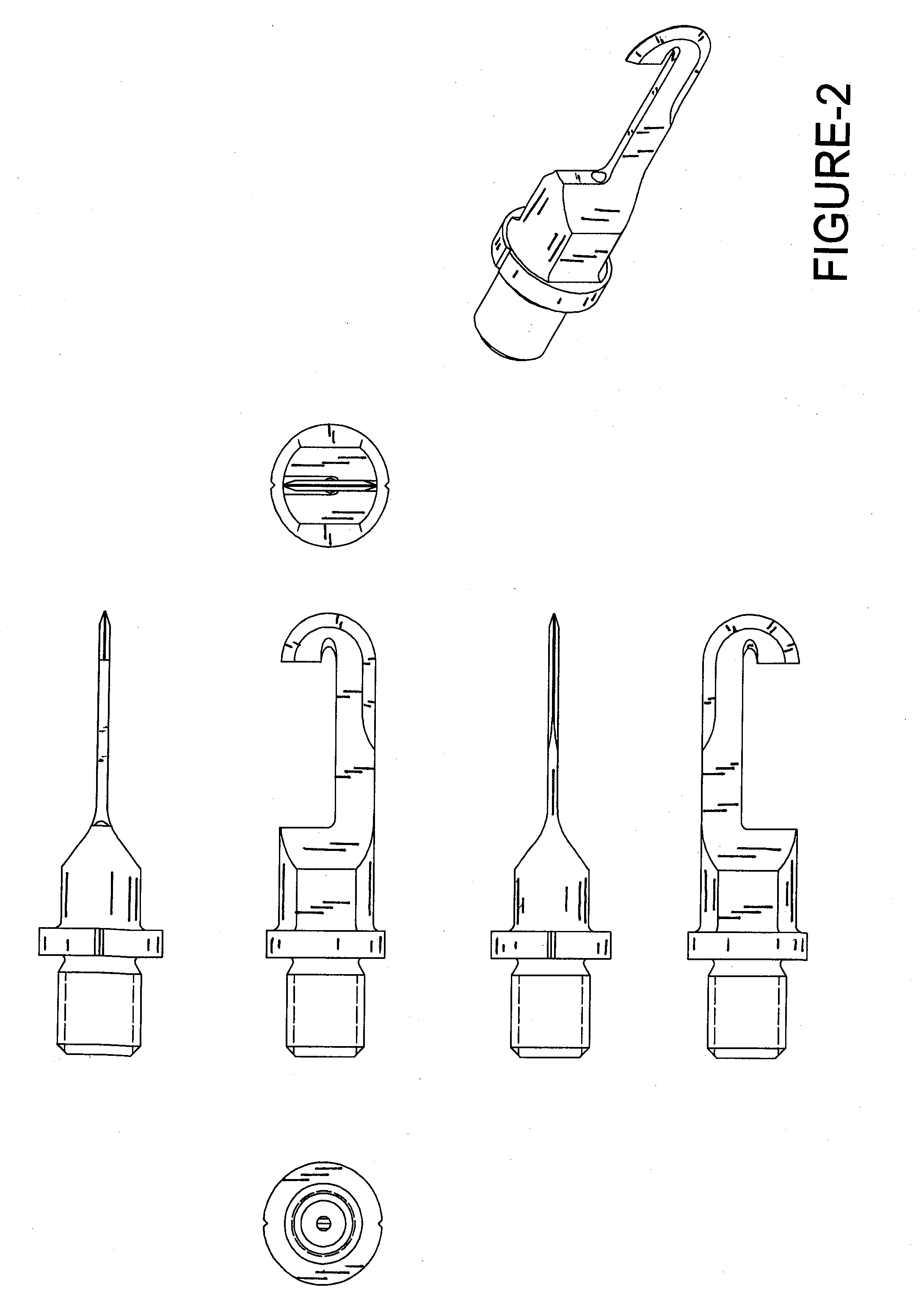Hook shaped ultrasonic cutting blade
a cutting blade and ultrasonic technology, applied in the field of ultrasonic cutting blades, can solve the problems of difficult to initiate and direct a cut, the ability to create a curved or compound angle cut is extremely limited, and the significant thickness of viable bone is lost in the cutting procedure, etc., to achieve the effect of improving the cutting speed, small width and difficult to guid
- Summary
- Abstract
- Description
- Claims
- Application Information
AI Technical Summary
Benefits of technology
Problems solved by technology
Method used
Image
Examples
Embodiment Construction
[0043]As depicted in FIG. 1, an ultrasonic surgical blade 110 comprises a blade body 112 and a shank 114. Shank 114 is fixed at one end to blade body 112 and is provided at an opposite end with an externally threaded neck 115 for connecting blade 110 to a source of ultrasonic vibrations (not shown). Shank 114 includes a cylindrical body 116 provided on opposing sides with a pair of planar surfaces 118 engageable by a wrench for alternatively tightening and loosening the blade from the source of ultrasonic vibrations. Shank 118 is formed at a distal end with a pair of inclined surfaces 120 that smoothly connect to blade body 112.
[0044]Blade body 112 includes a proximal plate shaped portion 122, an elongate longitudinal portion 124, and a hook-shaped distal end portion 126 all integrally continuously formed with each other. Blade body 112 is eccentrically disposed relative to a longitudinal axis 128 of blade 110 and particularly of shank 114. Elongate blade portion 124 is slightly tap...
PUM
 Login to View More
Login to View More Abstract
Description
Claims
Application Information
 Login to View More
Login to View More - R&D
- Intellectual Property
- Life Sciences
- Materials
- Tech Scout
- Unparalleled Data Quality
- Higher Quality Content
- 60% Fewer Hallucinations
Browse by: Latest US Patents, China's latest patents, Technical Efficacy Thesaurus, Application Domain, Technology Topic, Popular Technical Reports.
© 2025 PatSnap. All rights reserved.Legal|Privacy policy|Modern Slavery Act Transparency Statement|Sitemap|About US| Contact US: help@patsnap.com



